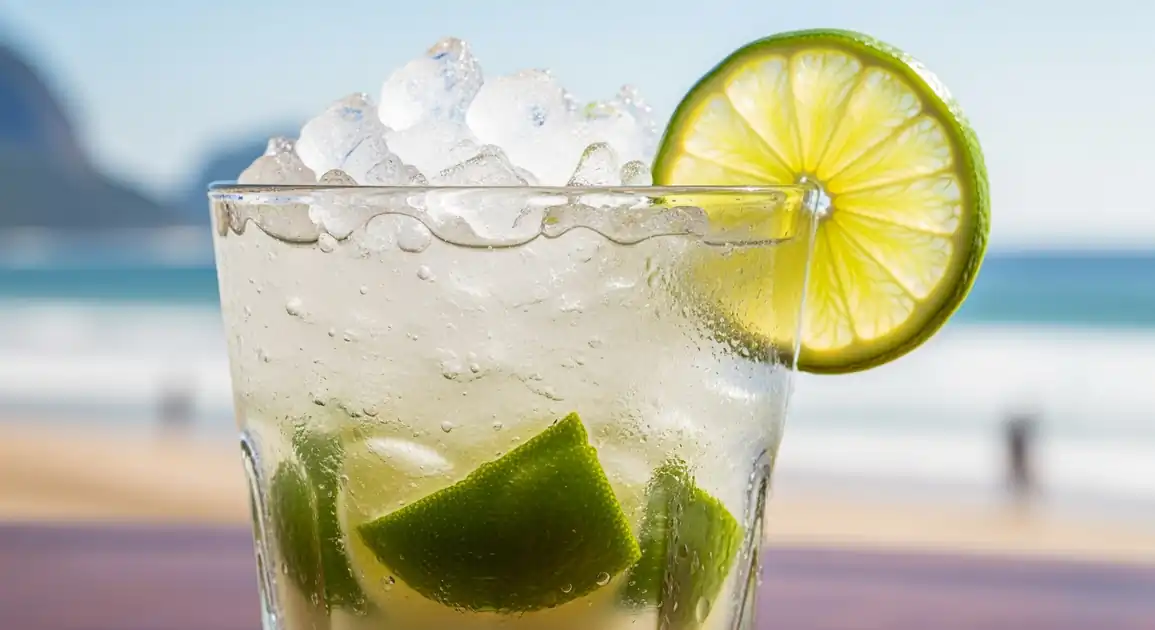Caipirinha
Caipirinha

Description
The Caipirinha is ubiquitous throughout Brazil, found in virtually every bar, restaurant, beach kiosk, and social gathering. As the national cocktail, it's a symbol of Brazilian hospitality and lifestyle. Quality and price can vary widely, from basic versions in local 'botecos' to artisanal creations in high-end bars.
Dietary Information
Serving information
Serving style
Served in a rocks glass (short, wide tumbler), usually over crushed or cubed ice, with a lime garnish. Often served with small straws or stirrers.
Quick facts
Bars/Restaurants: Typically 11 AM/12 PM until late. Kiosks: Daytime until early evening/night. Nightlife spots: Evening until early morning.
Safety Tips
What to Look For
-
Made with fresh, bright green limes
Ensures authentic flavor and quality. Avoid places using old limes or bottled juice.
-
Clean ice, preferably commercially made
Ice from unreliable sources can cause stomach issues. Look for clear, solid ice.
-
Prepared in a clean bar area with clean glassware
Basic hygiene reduces risk of contamination.
-
Bar/kiosk looks reputable and potentially busy
Popular spots often maintain better standards, but quiet quality bars exist too.
-
Balanced flavor upon tasting (not overwhelmingly sweet or sour)
Suggests proper preparation and potentially better quality ingredients.
What to avoid
-
Using bottled lime juice or old, browning limes
Drastically affects flavor and indicates poor quality.
-
Ice that looks cloudy, melts too quickly, or comes from an unknown source
Potential indicator of impure water.
-
Extremely cheap 'promotional' Caipirinhas
May use very low-quality cachaça, excessive sugar, or cut corners on hygiene.
-
Dirty bar surfaces, sticky glasses, or unhygienic handling by bartender
Increases risk of contamination.
-
Pre-mixed batches sitting in jugs
Freshly muddled Caipirinhas are vastly superior in taste and safer regarding ingredient freshness.
Price information
Price range
Budget tips
- Beach kiosks and local 'botecos' usually offer the lowest prices (10-20 BRL).
- Restaurants and tourist area bars will charge more (15-30 BRL).
- Upscale bars or those using premium cachaças can reach 30-40+ BRL.
- Fruit Caipirinhas often cost slightly more than the traditional lime version.
Value indicators
- Use of fresh limes, properly muddled.
- Good quality cachaça (not harsh or chemical-tasting).
- Balanced flavor (not too sweet or sour).
- Served cold with sufficient ice.
- Made fresh to order.
Where to Find This Dish
Beach Kiosks ('Quiosques')
Iconic setting along Brazil's famous beaches (Copacabana, Ipanema in Rio; beaches in the Northeast, etc.).
Any major beach boardwalk
Daytime, Sunset, Early Evening
Neighborhood Bars ('Botecos')
Authentic local bars found in residential areas, offering a more casual experience.
Look for simple bars with locals congregating
Evening, Night
Entertainment Districts
Areas known for nightlife (Lapa in Rio, Vila Madalena in São Paulo) have countless bars serving Caipirinhas.
Areas with high concentration of bars/clubs
Night
Restaurants
Most restaurants serving Brazilian or general cuisine will offer Caipirinhas.
Various restaurants
Lunch, Dinner
Vendor Tips
- Specify your preferred cachaça brand if you have one and they offer choices.
- Ask for 'sem açúcar' (no sugar) or 'pouco açúcar' (little sugar) if you prefer it less sweet.
- Watch how it's made – fresh ingredients and proper muddling are key.
- Fruit Caipirinhas are delicious but mask the alcohol more – be mindful of consumption.
How to Order
Regional Variations
-
Caipiroska / Caipivodka
(Caipiroska / Caipivodka)
Made with vodka instead of cachaça.
-
Sakerinha / Caipisakê
(Sakerinha / Caipisakê)
Made with Japanese sake instead of cachaça.
-
Caipiríssima
(Caipiríssima)
Made with rum instead of cachaça.
-
Caipifruta (Fruit Caipirinha)
(Caipifruta)
Made by muddling other fruits along with or instead of lime. Popular options include passion fruit (maracujá), strawberry (morango), pineapple (abacaxi), kiwi, cashew fruit (caju), etc.
-
Caipirinha with Aged Cachaça
(Caipirinha com Cachaça Envelhecida/Ouro)
Using aged cachaça ('ouro') gives the drink smoother, woodier notes compared to the standard grassy 'prata' cachaça.
Cultural context
History
The exact origins are debated, but one popular theory suggests it evolved from a folk remedy for the Spanish flu around 1918 in São Paulo, originally made with lime, garlic, honey, and cachaça. Over time, garlic and honey were dropped, sugar replaced honey, and ice was added to create the refreshing cocktail we know today. The name 'Caipirinha' is the diminutive of 'caipira', referring to someone from the countryside, essentially meaning 'little countryside drink'. It was officially recognized as Brazil's national cocktail and its recipe regulated by law.
Local significance
The quintessential Brazilian drink, representing national pride, relaxation, and socializing. Integral to beach culture, parties ('festas'), and barbecues ('churrascos').
Eating customs
- Enjoyed before meals, during meals (especially heavier ones like feijoada), or on its own.
- Often sipped slowly despite its refreshing nature, due to its strength.